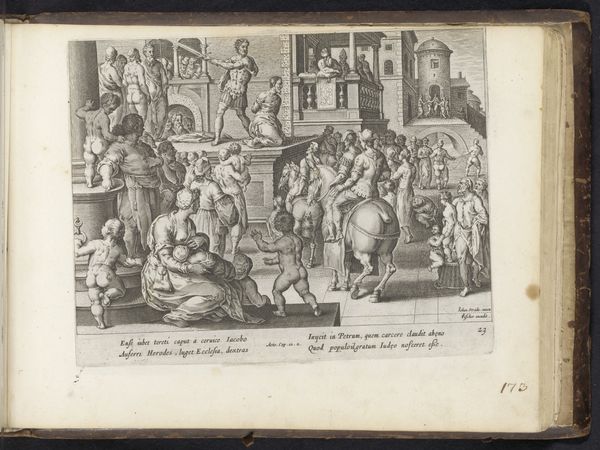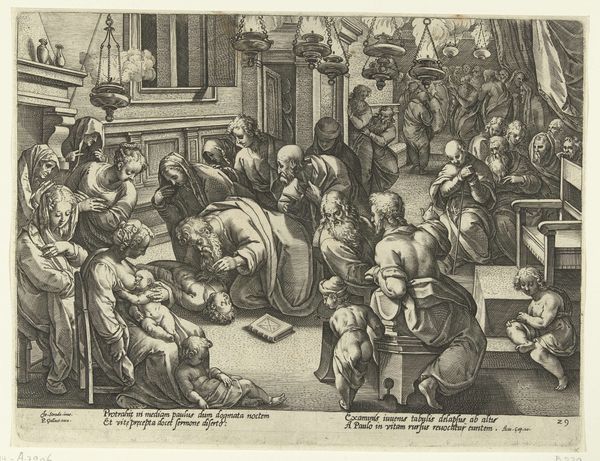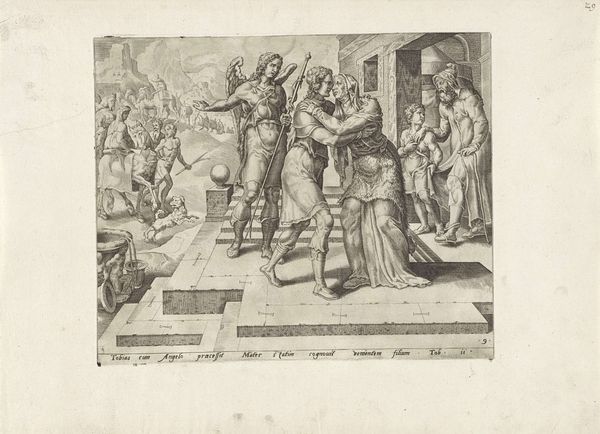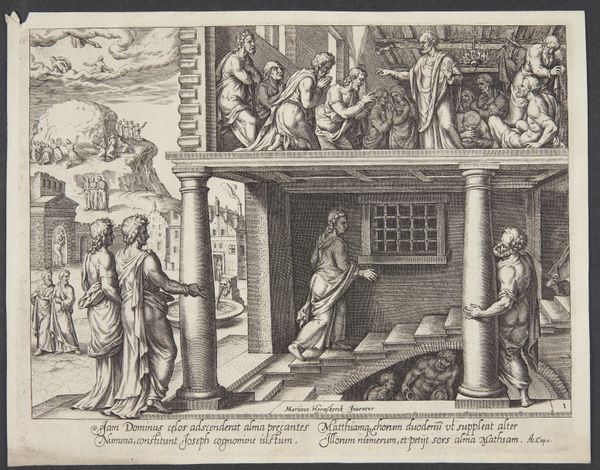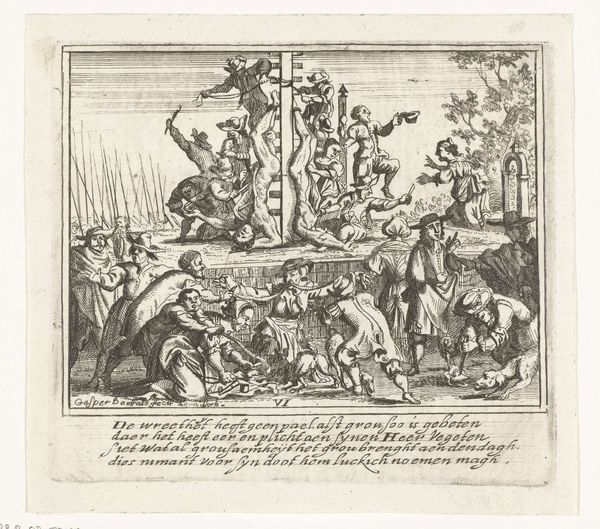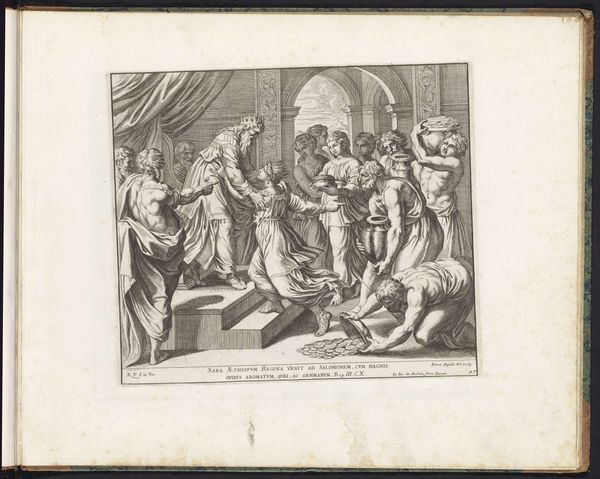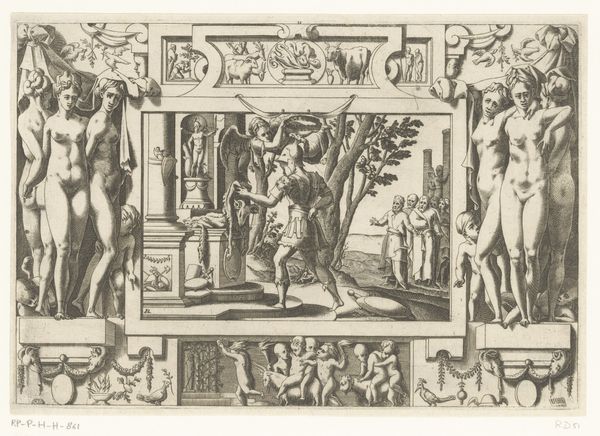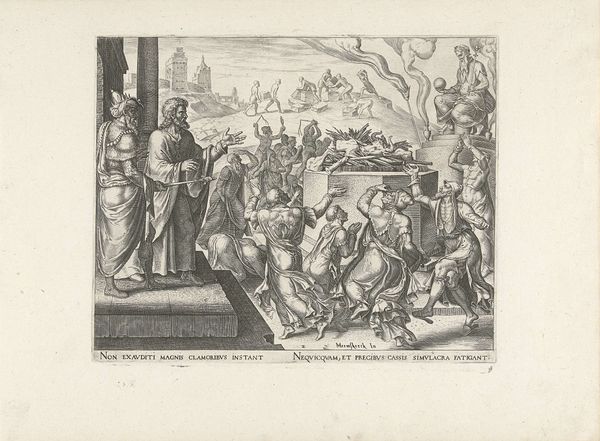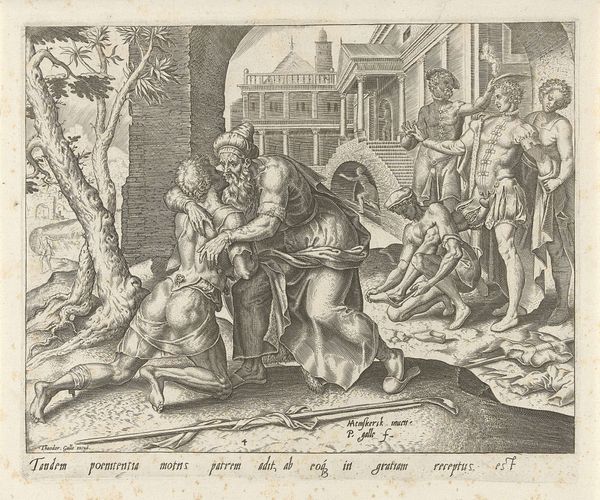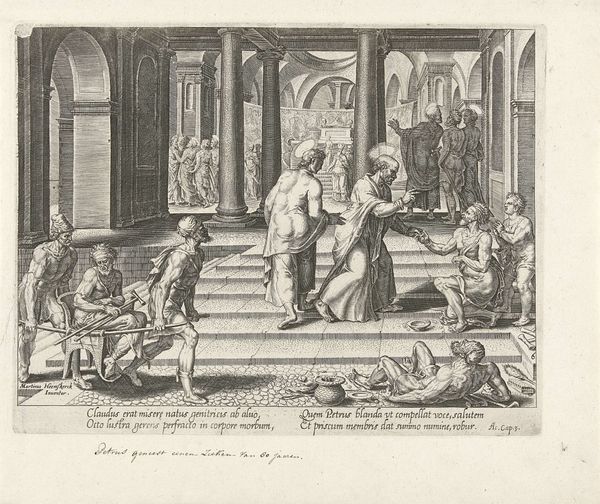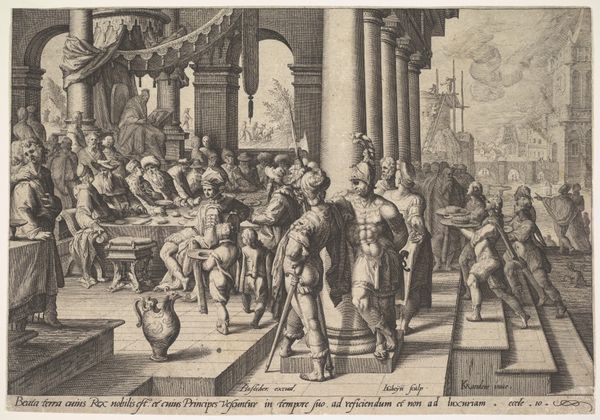
Dimensions: height 200 mm, width 264 mm
Copyright: Rijks Museum: Open Domain
Philips Galle created "Decapitation of James the Greater," a print, sometime before 1612. The composition is bisected, split between the execution up top, and the reactions of the figures below, all constructed with extremely fine lines. The architecture and the crowd seem to box in the beheading scene, rendering the execution a spectacle of public order. The event occurs on a stage, of sorts, with a man overlooking from a balcony. He seems to be in charge of a theater. Yet, the emotional heart of the scene is below, where a woman and children huddle together as if they are spectators, overwhelmed and unable to look away. Galle’s use of line work almost flattens out the figures, reducing everyone to players on a stage, which destabilizes the boundary between spectator and spectacle. This suggests the dangers of a society where public executions are normalized, where fixed morality is destabilized, and where the boundary between justice and cruelty becomes blurred.
Comments
No comments
Be the first to comment and join the conversation on the ultimate creative platform.

